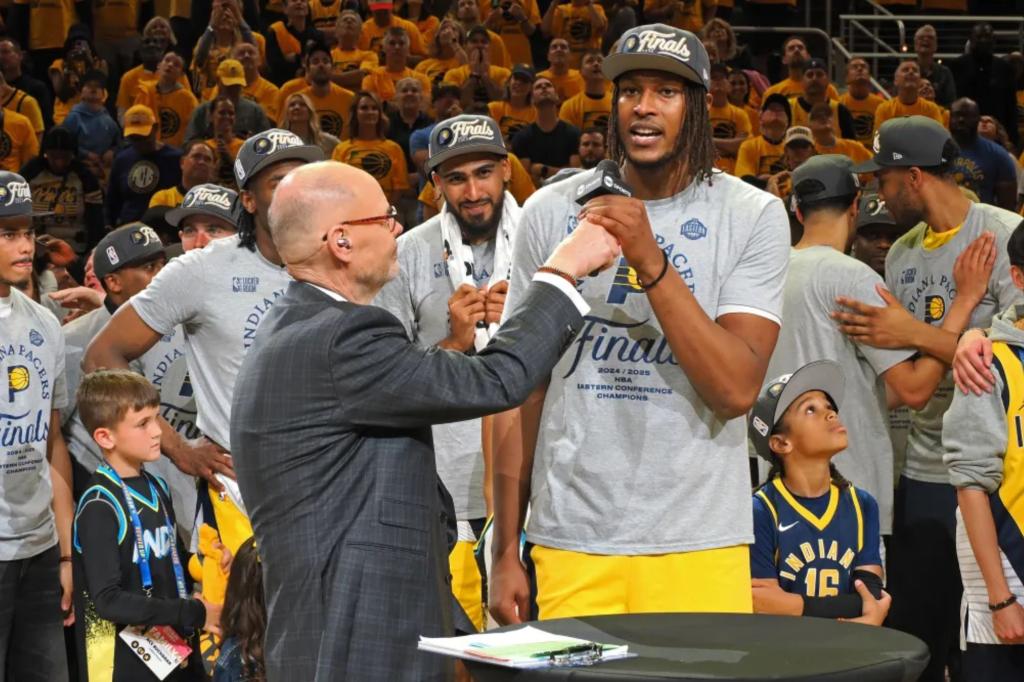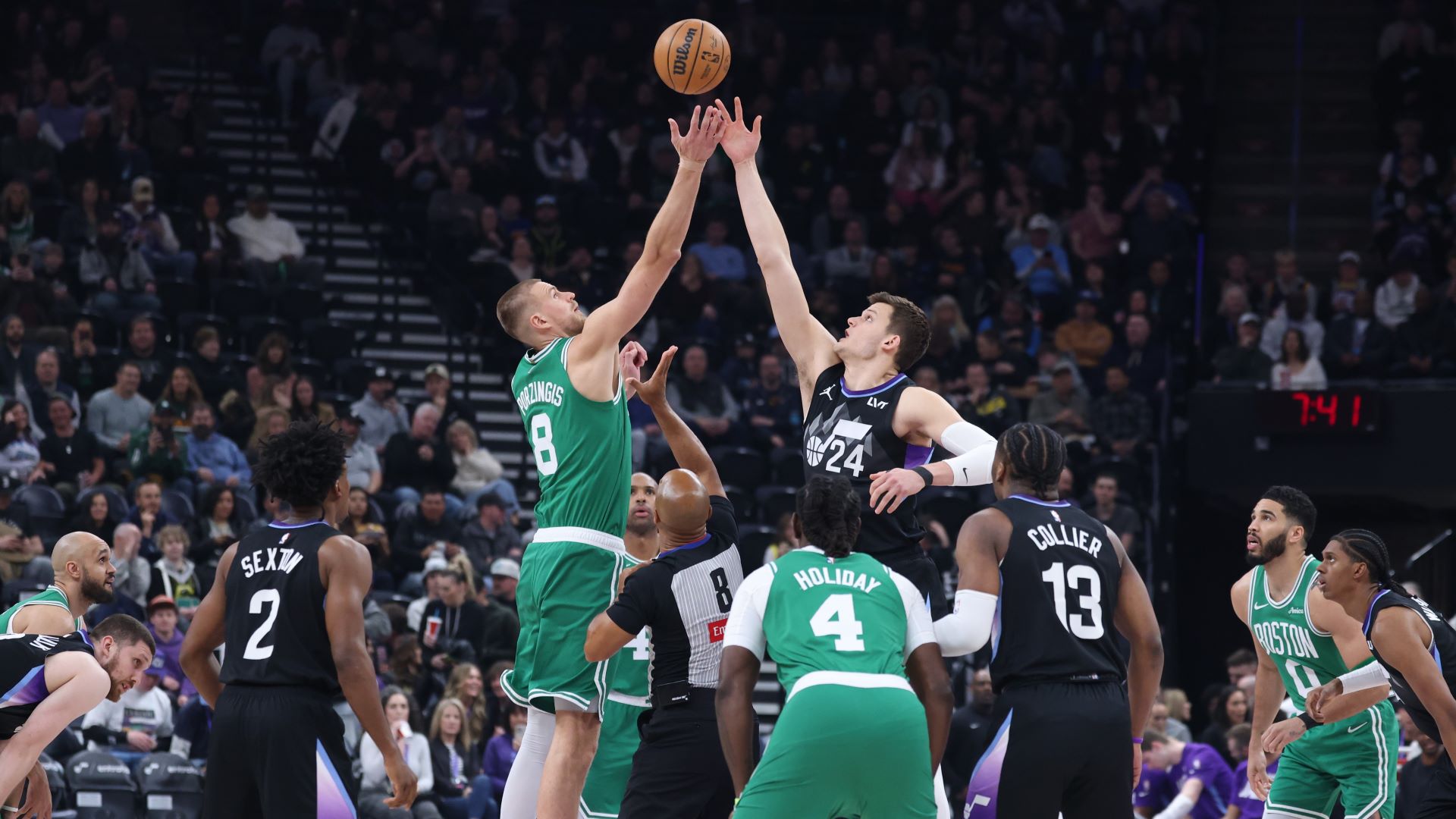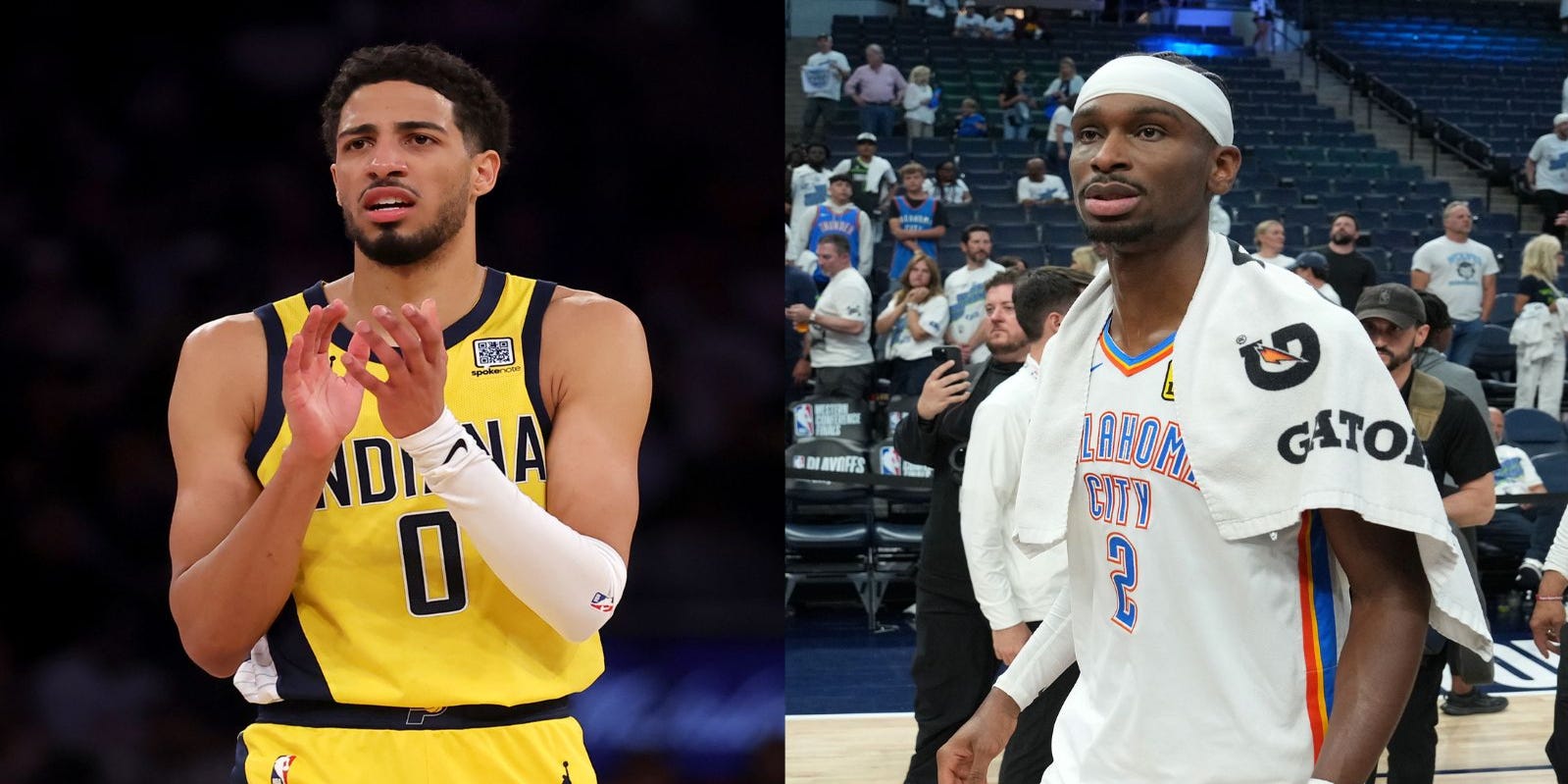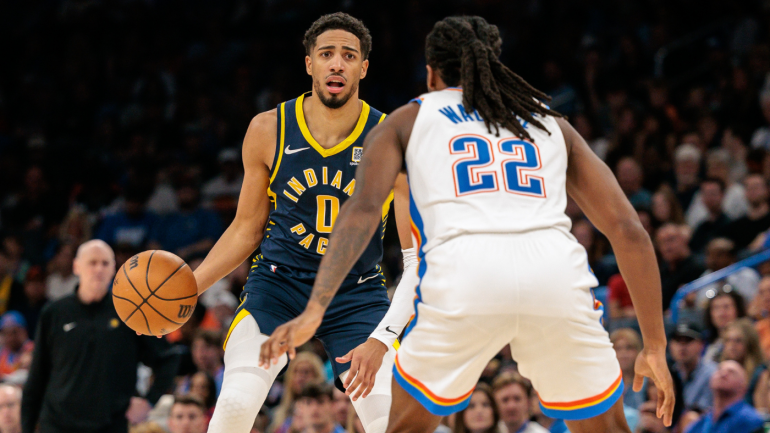
The Oklahoma City Thunder are a juggernaut. They won 68 games in the regular season with the best point differential in NBA history. They won 40 of those games by 15 points or more, another new record, and they’ve already won seven playoff games by that same margin (and five of them by 25-plus). At their best, it looks like they must have snuck a sixth defender on the court. Last Wednesday, in Game 5 of the Western Conference finals, they made the Minnesota Timberwolves — an excellent, well-coached team in their own right — appear downright incompetent, and it wasn’t even particularly surprising. Ten days before that, the Thunder finished off their second-round series the exact same way: in Game 7, the Denver Nuggets had trouble even getting the ball to Nikola Jokić.
On Sunday, guard Cason Wallace argued against the notion that Oklahoma City had separated itself from other young, talented teams by barreling right past the learning-from-failure stage that is normally part of the trajectory. “I don’t think we skipped any steps, personally,” Wallace said. Then he detailed the obstacles that the Thunder had overcome this season: “Chet [Holmgren] going down. Not having any bigs at one point. Players having to change their roles. Losing by a lot in the playoffs. Going to Game 7.”
Unintentionally, though, Wallace strengthened the case for OKC as a historical anomaly. This is a team that has won 80 games en route to the Finals despite starting a 6-foot-5 wing (Jalen Williams) at center for a stretch and having both of its starting bigs (the two-headed monster of Holmgren and Isaiah Hartenstein) available at the same time for less than a quarter of the regular season.
“We understand the magnitude of the opponent,” Indiana Pacers coach Rick Carlisle said after his team punched its Finals ticket on Saturday. “Oklahoma City has been DOMINANT all year long.” (Carlisle specified that the word should be in capital letters.)
Had the Thunder failed to make the NBA Finals this season, after Shai Gilgeous-Alexander was named MVP, it would have been a crushing disappointment. The same cannot be said for the Pacers, who won 50 games in the regular season, upset the No. 1-seeded Cleveland Cavaliers in five games in the second round and then disposed of the New York Knicks in six games in the Eastern Conference finals. That Indiana has made it this far is an amazing achievement, especially considering it started the season so slowly.
The Pacers are massive underdogs (+490 to win the series at Caesars Sportsbook), but they’ll enter the Finals with the confidence of a team that has defied every external expectation. As much as any team in the league, they believe in their system and style of play.
“Both teams are coming into the Finals with the same, like, psychological profile right now,” Oklahoma City coach Mark Daigneault said Sunday, “where they’re highly connected and more connected now than they were at the beginning of the playoffs.”
OKC and Indiana have a fair bit in common. For all the talk about the Pacers (aptly) playing with pace, the Thunder were slightly speedier than them offensively in the regular season and the first three rounds of the playoffs, per Inpredictable. Both teams are led by star guards who may have earned the nickname “Slim Reaper” if some Redditor hadn’t bestowed it on Kevin Durant in 2014. Both teams are deep, too, and, as Pacers center Myles Turner put it on Saturday, they both “use the power of friendship.” Turner laughed as he said it, but he was being at least semi-serious. Carlisle and Daigneault give their players a lot of freedom, but neither team is loose with the ball. As you might expect of teams that have made it this far, they both have that immediately recognizable more-than-the-sum-of-their-parts vibe.
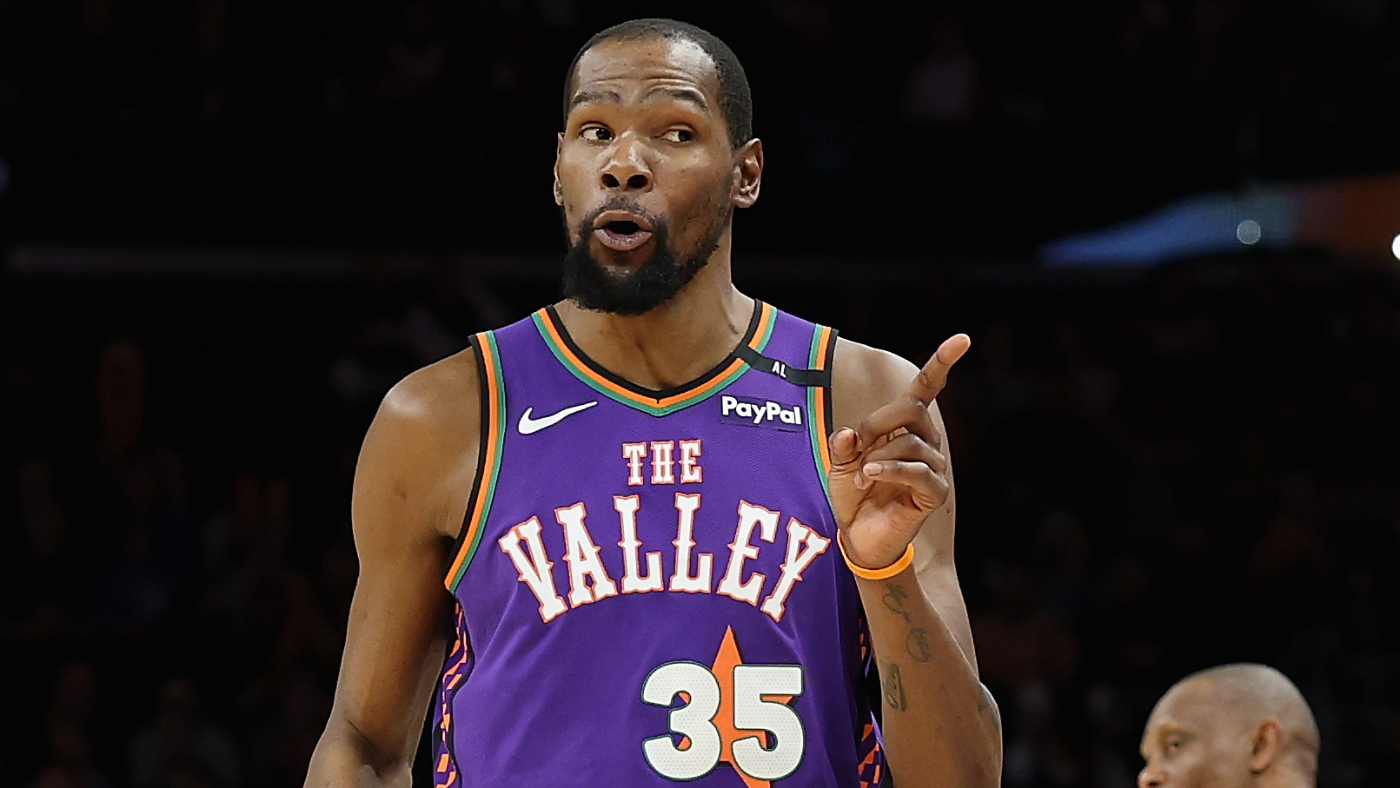
The Thunder’s biggest advantage is their swarming, terrifying defense, which might be the best I’ve ever seen. If the Pacers have a big advantage anywhere, it’s that they’ve had a better, smoother halfcourt offense in the playoffs. This was not true in the regular season (OKC ranked No. 2 in the halfcourt, Indiana No. 4, per Cleaning The Glass), so it’s possible that it’s entirely because they’ve faced different opponents. If you think the Pacers can make this interesting, though, then you probably think there’s more to it than that.
OK, that’s the big-picture stuff taken care of. Now let’s get granular, baby. Below are six questions about the 2025 NBA Finals:
1. Can Indy stay steady against these turnover-forcing maniacs?
Because of the particular (and, honestly, peculiar) genius of Tyrese Haliburton, Indiana has achieved something almost impossible: It is a low-turnover team that passes the ball like crazy, is in constant motion and wants to run at every opportunity.
All season, Carlisle has preached the importance of winning the possession game. The Pacers are not built to be an awesome rebounding team, which means they’ve needed to dominate the turnover battle. For them to have a chance against the Thunder, this needs to remain their strength.
“We gotta lean into the things that have helped make us successful, which is hard, fast, unselfish, solid play,” Carlisle said Monday in an interview on ESPN. “And we gotta do a good job in the possession areas.”
Indiana has been defined by its commitment to the bit. It is hard to pressure opposing ballhandlers all the time, and is hard to play such a frenetic way on offense. The Pacers always believe they’ll be calmer than you are if the game gets wild, though, and, since they trust their bench, they believe they’ll be fresher than you are in crunch time.
“Their defensive philosophy is very much aligned with their offensive philosophy, so it creates a certain air to the game when you play against them that is difficult to play against,” Daigneault said Sunday, adding that Indiana is an “incredibly challenging opponent that stays in character in all circumstances.”
This circumstance, though, will test the Pacers like never before. The Thunder almost never lose the turnover battle, and, in a bunch of important ways, Oklahoma City and Indiana are mirror images of each other. According to Cleaning The Glass:
- Offensively, Oklahoma City and Indiana were exactly as effective as each other in transition in the regular season, and the Thunder have taken that to another level in the playoffs.
- The Pacers were the only team that allowed fewer transition opportunities than the Thunder in the regular season.
- OKC had the league’s lowest turnover rate in the regular season. Indiana had the third-lowest.
- Both teams have slightly improved their turnover rates in the playoffs.
The big, glaring difference here is that the Thunder force turnovers more often than any other team in the NBA (and Indiana is only slightly above average in this area). Alex Caruso, Lu Dort and Wallace are three of the league’s premier point-of-attack defenders. Caruso and Williams are two of the league’s most disruptive off-ball defenders. Collectively, Oklahoma City’s length, athleticism and physicality is overwhelming.
Especially early in the series, this could be a shock to the system for the Pacers. Whether or not they can really play like the Pacers against a defense like this is an open question.
2. What if OKC goes cold (and Indiana doesn’t)?
If John Haliburton hopped out of a time-traveling caravan to tell you he’d watched his son win Finals MVP and lead the Pacers to the title (over a Thunder team that had not sustained any injuries), what would you think was about to happen in this series?
I hesitate to get all make-or-miss league on you, but I’d immediately think about Oklahoma City’s 3-point shooting. According to Cleaning the Glass, which filters out heaves and garbage time, the Thunder have made 33.5% of their 3-point attempts in the playoffs. (Only the Detroit Pistons and Orlando Magic, both long gone, have been less accurate.) And on catch-and-shoot 3s in particular — the kind of shots Indiana might be willing to surrender to role players in order to protect the paint — OKC has shot 34.2% in the playoffs, which ranks 12th among the 16 teams that qualified, according to NBA.com.
Shooting isn’t necessarily a weakness for the Thunder. In the regular season, they were in the top five in accuracy from deep (and on catch-and-shoot 3s in particular) on decent volume. Just about everybody in the rotation (with the notable exception of Caruso) has shot significantly worse in the playoff crucible, though, which is pretty similar to what happened in the second round against the Dallas Mavericks last season. One of the reasons their seven-game series against the Nuggets was so fascinating was that both teams were selling out to protect the paint.
I suspect Indiana will mix in some zone, like Denver did. I also suspect that, at the other end, the Pacers will dial up their 3-point volume. They need variance, and 3s are generally available against Oklahoma City, especially when it goes double-big.
Indiana is here in part because it is the only team that has shot better than 40% from 3-point range during the playoffs. On catch-and-shoot 3s specifically, it has shot 43.9%, and everybody in the rotation except for Obi Toppin and Bennedict Mathurin has been significantly more accurate in the playoffs than in the regular season.
On the one hand, the Thunder haven’t faced an opponent that starts five legitimately threatening 3-point shooters in the playoffs until now. On the other hand, no one should be surprised if many of those shooters are shakier in this series, with OKC flying around all over the place. I wonder, too, how bold Daigneault will be, matchup-wise. He’s typically unafraid to put bigs on perimeter players, and he’s done it against the Pacers. Their individual shooting percentages won’t necessarily dictate how much respect the Thunder show them.
3. How can the Pacers pick at OKC?
What if John Haliburton got out of his time-traveling caravan and told you he’d watched his son’s team get swept in the Finals (and he couldn’t bear to talk about it)?
I’d assume that Indiana’s free-flowing offense finally met its match. There’s no shame in that, really. The Thunder offer the Pacers no small, overmatched guards or clumsy, slow-footed bigs to pick on.
“I think our defense is special because we don’t have no weak links,” Harteinstein said Sunday. “I think normally a team can kind of go out and kind of hunt one player. We don’t really have that that much.”
Indiana won’t be able to run set plays that to put two weak defenders in the same action because there will never be two weak defenders on the floor. What Indiana has to do instead is consistently exploit smaller advantages. Hartenstein and Holmgren are excellent defenders, but when they’re on the floor together, the Pacers need to test the Thunder’s willingness to A) switch them onto Haliburton and B) get into rotation. If OKC’s bigs drop against Haliburton’s pick-and-rolls, Haliburton needs to punish that coverage with pull-up 3s and floaters until there’s an adjustment.
“He stirs the drink,” Daigneault said Sunday. “He’s got an unbelievable ability to score, which I think creates a lot of the passing. You think back to guys, like, [Steve] Nash was like that. The passing is what you think about, but the threat of scoring is what creates the advantages and opens up the passing. And Haliburton can really score. He can shoot 3s, he can score in the pick-and-roll game. He’s a constant threat, and then the minute you commit yourself to him, he leverages that threat to throw the ball early to his teammates and put guys in advantages.”
Pascal Siakam, who hoisted the Larry Bird Trophy on Saturday as MVP of the East finals, needs to be a constant threat, too. This matchup calls for a heavier dose of inverted pick-and-rolls with Siakam handling the ball and whoever Gilgeous-Alexander (or Isaiah Joe or Aaron Wiggins) serving as the screen-setter. None of those guys are bad defenders, but they’re probably too small for Siakam. Particularly when Siakam is being defended by Hartenstein or Holmgren, this could be a good way to get to the free-throw line. Based on the regular-season numbers, free-throw rate is one of the few edges Indiana has on both ends of the court.
There will be all sorts of smaller battles, too. When the Thunder put a wing on Turner, can the Pacers consistently take advantage of it? Same thing when they put a big on backup point guard T.J. McConnell. Indiana is not a strong offensive rebounding team, but it should consider crashing the glass harder than usual when Holmgren is OKC’s lone big. Indiana needs every extra possession it can get.
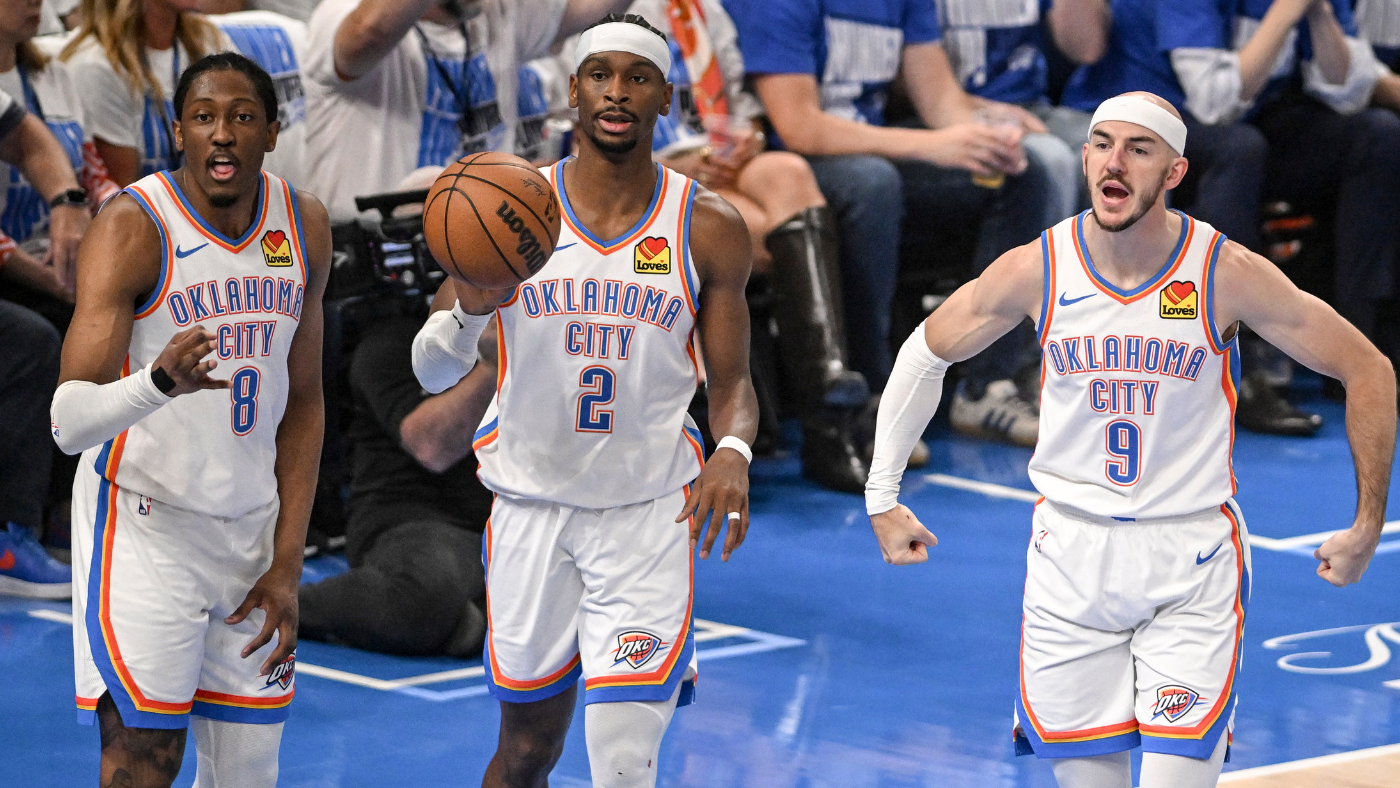
4. Will SGA use the Pacers’ pressure against them?
The Pacers aren’t stacked with elite defenders, but they’ve evolved into a pretty good defensive team in part because of their unrelenting ball pressure. Andrew Nembhard is coming off a masterful individual performance against Jalen Brunson in the clincher against New York, and now they’re going to need him to pester the one star in the league who is even shiftier.
Here’s the tricky part: Pressure defense isn’t necessarily the smartest strategy against Gilgeous-Alexander. In the Western Conference finals, Minnesota had to dial it back after the first two games of the series because he was coming off high pick-and-rolls with so much empty space in front of him. By lowering their pick-up point, the Wolves were able to show him more of a crowd.
I don’t expect Indiana to abandon its defensive identity entirely. It can’t afford to foul Gilgeous-Alexander on the perimeter, though, and it has to make sure he sees bodies when he tries to get downhill. Gilgeous-Alexander is difficult enough to deal with in tight spaces, so the Pacers need to be careful not to give him a long runway.
5. How will OKC shift shapes?
If the Thunder decide to start Caruso instead of Hartenstein in Game 1, I won’t be shocked. They started Holmgren at the 5 a few times in the regular season when both bigs were healthy, most notably against the Boston Celtics in March, and they’ve started four second halves this way in the playoffs. If the goal is to make Indiana as uncomfortable as possible from the jump, getting Caruso on the court is the move.
The beauty of this iteration of Oklahoma City, though, is that it can give its opponents radically different looks. We all think of the Thunder as agents of chaos who feast on turnovers and run-outs, but, if you just look at their double-big minutes, they have a different profile — they succeed largely because they dominate the glass and allow almost nothing at the rim.
Maybe Daigneault will stick with the double-big starting lineup because he thinks pounding the offensive glass is the best way to stop Indiana from leaking out in transition. Maybe he’d prefer to use it against the Pacers’ bench unit because he’d like to put one of the bigs on McConnell. Everything is on the table; he could go centerless in the second quarter just to see how Indiana responds.
“You’re just in a constant state of trying to evolve and stay a step ahead of the series to the degree that you can, knowing that your opponent is trying to do the same thing,” Daigneault said Sunday.
6. What can Indiana get out of its bench?
This question is more of a series of sub-questions:
- Is Mathurin ready for this? He’s had his moments during this playoff run, but, against both Cleveland and New York, he was actively harmful in multiple games. Mathurin is the Pacers’ best foul-drawer, and, as a microwave scorer, he’s precisely the type of player who can swing the momentum of a game. His challenge, though, will be consistently making the right reads against a defense that will try to bait him into bad decisions.
- How will McConnell and Ben Sheppard hold up? Both of them could get a shot at defending Gilgeous-Alexander when Nembhard’s not on him, and both are capable of giving Indiana a boost offensively. I’m particularly interested what happens when McConnell is running the show — in this series, with all of the length on the other side, can he get to his spots and find early shot clock scoring opportunities the way he normally does?
- Can Jarace Walker give the Pacers anything? The 21-year-old forward will miss at least the first two games of the series, Carlisle said Monday in an interview on 107.5 The Fan, adding that “he was still on crutches [on Sunday]” after hurting his ankle in the fourth quarter of Game 6 against the Knicks. In theory, Walker’s defensive versatility could get him on the floor later in the series, but it’s unclear if he’ll even be available. This is a big-time bummer for all of your favorite podcasters.
- What is the answer at backup 5? Thomas Bryant was awesome in the clincher against New York, but I have my concerns about his pick-and-roll defense and there’s no guarantee that his 3s will keep falling. If Indiana needs to go another direction, will Tony Bradley, who hurt his hip in Game 5 of the conference finals, be a viable option? I’m not sure Bradley will be much more of a deterrent in drop coverage, especially if he’s less than 100% healthy. Toppin is always something of an X-factor for the Pacers, and he’ll be even more important if they’re forced to go small.
The NBA Finals tip off Thursday. Boom baby/Thunder up!

